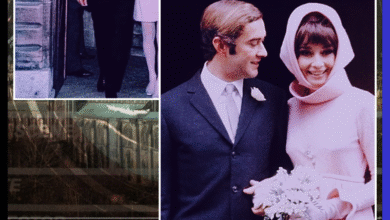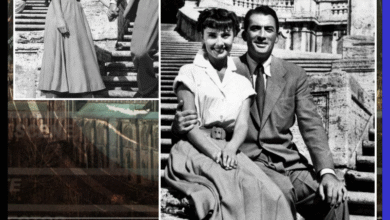Marilyn Monroe’s Secret Acts of Kindness: The $10,000 Donation She Made After the Cameras Left
OPINION: This article may contain commentary which reflects the author's opinion.
Marilyn Monroe, widely regarded as one of Hollywood’s greatest icons, is often remembered for her cinematic achievements, magnetic charm, and unforgettable performances. However, beneath her dazzling fame, Monroe was also a passionate philanthropist, deeply committed to improving the lives of others. A noteworthy example of this commitment came in 1955 when Monroe made a private donation to the Muscular Dystrophy Charity, a gesture that speaks to her generosity, compassion, and lasting influence on the charitable world.
The 1955 Donation: A Quiet Act of Generosity
In November 1955, Monroe made a personal contribution to the Muscular Dystrophy Charity, an organization dedicated to supporting individuals affected by the debilitating condition. The exact amount of her donation remains unknown, as the donation was made quietly and without fanfare, but the act itself speaks volumes about her character. This is not an isolated instance but rather part of a broader pattern of her giving throughout the 1950s. Monroe’s charitable efforts often focused on health-related causes, and her donation to muscular dystrophy was a reflection of her empathy for those suffering from chronic and life-altering conditions, particularly the young individuals who were disproportionately affected by this illness.

Key Qualities Demonstrated by Monroe’s Charitable Work
Monroe’s philanthropy highlights several important qualities that defined her, both as a person and as a public figure. Below, we break down these qualities and how they were reflected in her charitable efforts, especially her support for the Muscular Dystrophy Charity.
Generosity and Compassion
Monroe’s decision to donate to a cause like the Muscular Dystrophy Charity is indicative of her generosity, but also her deep compassion. The charity specifically supported children and young adults, many of whom faced immense challenges with no available cure for the condition. Monroe’s decision to privately help, rather than seeking the spotlight, was consistent with her actions throughout the 1950s, including her involvement with other health-related organizations. For example, she also supported the Arthritis and Rheumatism Foundation, where she appeared at events like a 1955 circus, raising awareness for the organization. These actions reflect her genuine desire to improve the lives of those facing serious health challenges.

Using Fame for Good
Monroe’s fame was not just for glamour; she wielded it as a powerful tool to support causes close to her heart. As one of the most famous women in the world at the time, her involvement in charitable causes brought much-needed attention to these issues. While her donation to the Muscular Dystrophy Charity was private, Monroe’s public acts were equally impactful. For example, in 1954, she famously performed for U.S. soldiers stationed in Korea, showing her willingness to use her fame to uplift those in need. Whether it was her involvement in charity galas or performing for the troops, Monroe consistently leveraged her star power for the greater good.
Consistency in Charitable Efforts
Monroe’s commitment to charity wasn’t just a fleeting effort; it was part of a sustained and dedicated pattern. From 1952, when she visited the Betty Bachrach Home for Afflicted Children, to her involvement in various causes like the WAIF (Women’s Auxiliary to the International Fellowship) for abandoned children, and The Milk Fund for Babies in 1957, Monroe was unwavering in her support for vulnerable communities. Her dedication continued throughout her life, with her final public appearance at a muscular dystrophy benefit in 1962. This consistency underscores the lasting impact of her charitable spirit, highlighting her deep-seated belief in using her resources for good.
Personal Involvement and Humility
One of the most remarkable aspects of Monroe’s charity work was her personal involvement. She didn’t simply write checks or make public appearances; she actively engaged with the people and communities she was helping. Monroe spent time with soldiers during her trips abroad, a deeply personal and fulfilling experience for her. Her humility is best demonstrated by a touching story from 1955 when she increased a donation to a Mexican orphanage from $1,000 to $10,000 after the press had left, showing that her generosity was not motivated by the desire for publicity but by a genuine desire to help.
Broader Implications of Monroe’s Charitable Legacy
Marilyn Monroe’s philanthropic efforts, including her donation to the Muscular Dystrophy Charity, offer a glimpse into the life of a woman whose compassion and generosity extended beyond the silver screen. Her contributions to various causes, including children’s welfare, health-related charities, and international relief efforts, not only impacted the lives of countless individuals but also set an example for others in the entertainment industry and beyond. Monroe’s ability to use her fame for good and to make a real difference in the world is a testament to her character, far surpassing the role of a glamorous Hollywood star.
In a world often preoccupied with fame and fortune, Marilyn Monroe’s legacy reminds us of the power of kindness and generosity. Her charitable acts continue to inspire and set a standard for celebrities today, illustrating that one can achieve great things both on-screen and off-screen by using their platform to give back to those in need.
Conclusion
Marilyn Monroe’s donation to the Muscular Dystrophy Charity in 1955 may have been a private act, but it exemplifies the qualities that made her more than just a Hollywood legend. Her generosity, compassion, and humility, as well as her consistent commitment to charitable causes, cement her as a true humanitarian. As her story continues to inspire, we are reminded that her greatest legacy may not only lie in her cinematic achievements but in the difference she made in the lives of those less fortunate.



